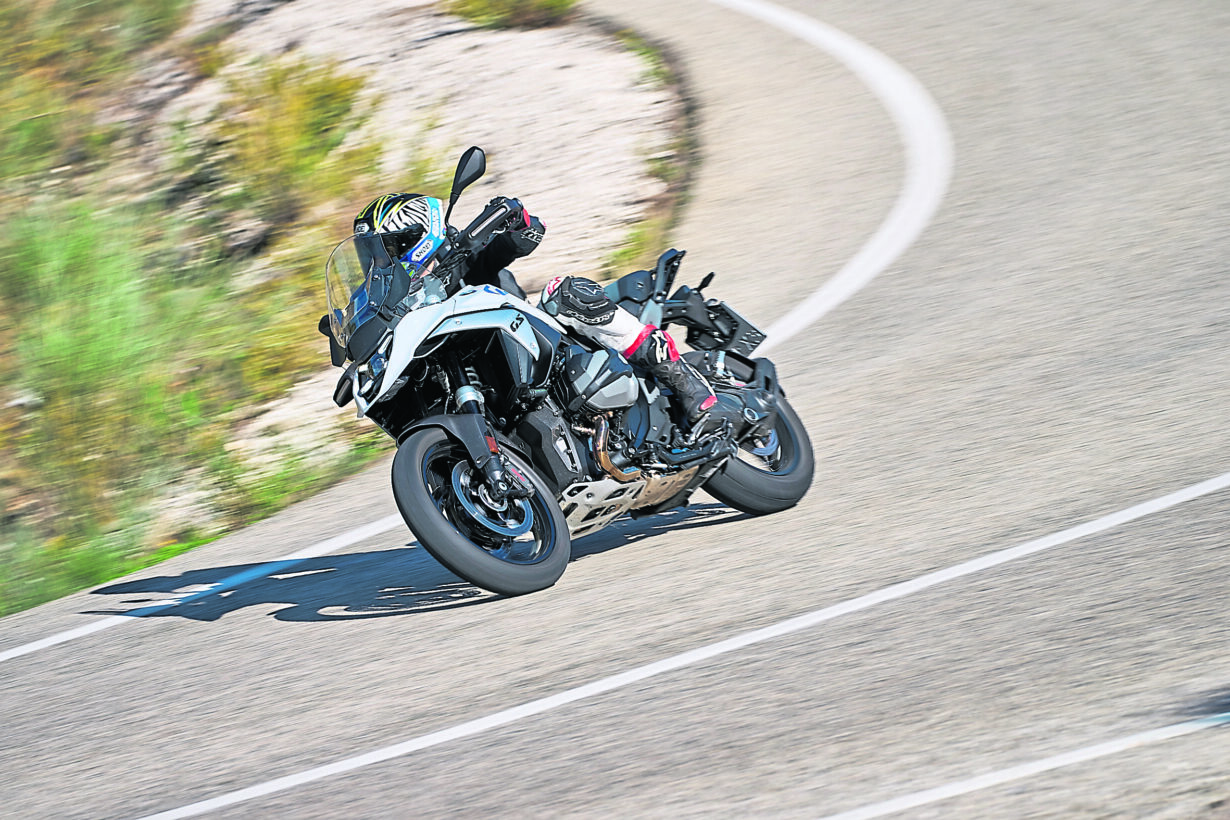f you like ’em big, bold and packed full of poke, BMW’s latest R 1300 GS could be just the ride for you. Bruce Wilson reports…
Despite my predilection for sportsbikes and trackdays, I know the GS very well. I had an R 1200 GS (air-/oil-cooled) in 2009 and clocked 9000 miles on it; at a time when I was also racing in National Superstock 1000. On paper, it and I weren’t right for each other – but I had an absolute blast on that bike. Fast-forward to 2014 and I found myself in Canada competing on the water-cooled R 1200 GS in the GS Trophy. And then just last year I was at it again on the R 1250 GS, competing in Albania in the GS Trophy again.

The point is, I love GSs; I’ve done a lot on them, but could the revolutionary 1300 float my boat in the same way as its forefathers? From an aesthetic point I liked the more angular, enduro-esque guise of the Beemer, which looked and is physically smaller than the 1250, while weighing in 12kg lighter, too. From the dust caps upwards, this was a wholly different breed of bike, built around the same principals of what’d come before, but that was about it. The frame, the motor, the wheels and the tech were of a new generation, with the salient figures being as tantalising as they were impressive. It’s not every day you hop on a bike with a stonking 149Nm of torque, but that’s what BMW was claiming from its oversquare motor, that now peaked at 9000rpm with a maximum output of 145bhp. Smaller, 4kg lighter and packaged completely differently, one of the biggest twists to the opposed cylinder engine was the packaging that now sees the gearbox located below the barrels. As for the frame, gone are the tubes of old, replaced by a two-part design that sees cast steel up front and forged aluminum at the back. Then there’s a completely new Telelever front end, that reduces flex, the need for ball joints and a load more undesirable traits that have been a staple part of the GS story since day dot. Add into that mix a new TFT dash; collision avoidance technology; front and rear radar; plus an optional adaptive seat that alters by 30mm (820mm to 850mm) once the GS achieves over 30mph, and you’ll begin to grasp the magnitude of the enhancements made. I could bang on for hours about this bike, as they did during the model’s presentation, but you’re probably ready to know more about what it’s actually like to ride, so let’s get to it.
For a big girl, topping the scales at 237kg, the Beemer was no slouch. As is so common in life, looks can be deceiving, and the same is true of the GS. It does not look like a bike that could disconnect your arms from their sockets, but I reckon it could, or at least it felt that way as I toyed with the abundance of torque from the twin. We were riding TE (Travel Edition) spec GSs, which meant they had loads of goodies, including dynamic suspension, integrated handguard indicators and four tiers of rider modes.

The shifter and blipper on the bike were decent, but harsh demands, especially going up the box in lower revs, were often met by a punctuated performance. Out of nothing more than curiosity, I switched the bike to ‘Road’ mode and the aggressiveness of the GS toned down massively, without leaving me feeling robbed of any fun.
As the ride went on, my brain began to wander to other parts of the machine. The other big consideration was how the bike handled. On paper, loads of mass, a long wheelbase and an upright riding stance aren’t suggestive of a bike that can turn on a tuppence, so it wasn’t that surprising to note that the GS needed a bit of persuasion to get it into bends. That said, it was impressively lithe for something of this size.
The thing is, after a day in the saddle I soon came to the point of realising that despite the model’s many, many changes over what had come before it, the 1300 still felt very much like a GS of old, only more polished, with better tech, more responsiveness and a sharper guise. For all the features that were different, including our bike’s electronically adjustable screen, that rose and fell with the touch of a button, there was still the same underlying DNA to the riding experience, which was impressive considering just how drastically different every single module on the bike was.


